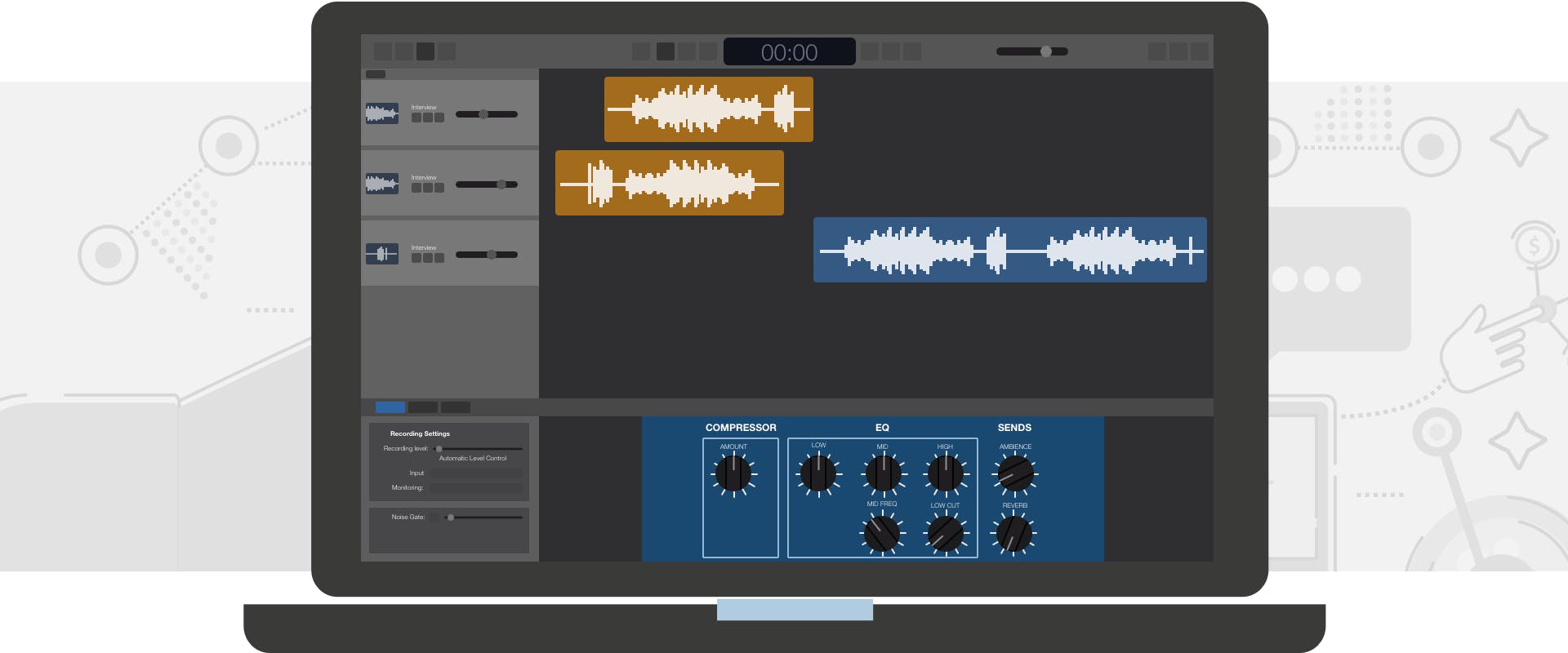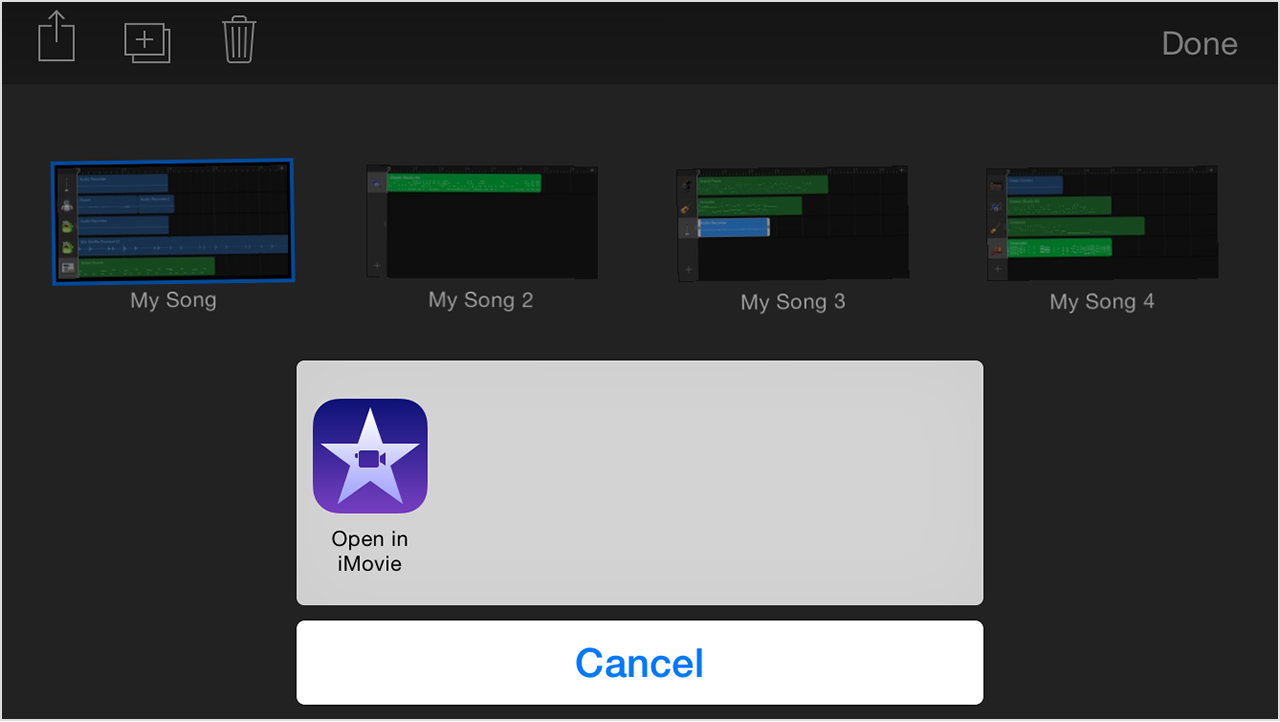Move Garageband Files From Ipad To Mac

How To Transfer Ipad Garageband To Mac
Part 2: How to Transfer Garageband Files from Mac to iPhone 12/12 Pro/11; Extra Tips: Transfer Files in an Easy Way; Part 1: How to Transfer Garageband Files from iPhone to Mac. Garageband is popular on the iPad and iPhone and is loved by people all over. There can be many reasons to transfer Garageband files from iPhone to Mac like you may. Transfer from iPad to Mac: Click the disclosure triangle beside an app name to see its files on your iPad, then drag a file to a Finder window. To delete a file from iPad, select it below an app name, press Command-Delete, then click Delete. Transfer files between iPad and your Windows PC.
Today’s Mac Gem doesn’t do a lot, but what it does is sure to be a big help to certain users.
Apple’s GarageBand is a killer app, but it’s also a huge one—between the application and all of its support files (loops, instruments, and so on), we’re talking around 2.5GB of hard drive space. (Not to mention any additional loops or Jam Packs you download or purchase). For users with smaller hard drives, that’s a lot o’ space to be wastin’! (OK, OK, so it’s not really “wasted” if you actually use GarageBand—humor me here.)
Because of these space requirements, a good number of Mac users—especially those with smaller hard drives—have tried to install GarageBand somewhere other than their startup drive. This makes perfect sense: I know quite a few people with crowded original drives who have since purchased an external or second internal hard drive for the extra storage it provides. Other users have found that GarageBand’s performance improves when it and its support files are installed on a faster drive.

Problem is, the iLife installer won’t let you put GarageBand anywhere but your startup volume. And although you can copy the application itself to another drive, the app is the smallest component of the package (~50MB)—the real space-users are the support files, which must reside in various folders in the /Library directory.
If you’d like to be able to stick your GarageBand installation somewhere else, the easiest solution is David Hodge’s free GarageBand Anywhere 5.0.1 ( ). This nifty utility can either move your existing GarageBand installation to another volume or, using the iLife ’05 installation disc, install GarageBand directly to another volume.
The Install GarageBand option uses your iLife installation DVD to install a fresh copy of the GarageBand application and its support files on any volume you choose. It then creates Unix links on your startup disk so Mac OS X treats the installation as if it’s located on that startup disk.
The Move GarageBand option moves your existing application and support files—including any Jam Packs you’ve installed—to a volume of your choice. It then creates Unix links to those files from your startup drive so that GarageBand works as expected. As a precaution, the utility saves copies of all the moved files in the directory ~/Old GarageBand Files—if the moved application works properly, you can delete this folder; if not, you can manually drag the files back to their original location. (The original directory organization of all the files is preserved inside this folder, so it’s clear where they should go.)
Finally, a Fail-Safe Remove option is also available in case you have any problems with the utility. Running GarageBand Anywhere in this mode moves all GarageBand files into a folder called Removed GarageBand Files, located in your home directory, allowing you to simply reinstall GarageBand from the iLife DVD (and then, of course, delete the Removed GarageBand Files folder).

How To Transfer Garageband Files From Ipad To Imac
In my testing on two computers, GarageBand Anywhere worked as advertised. In fact, it even worked when it warned it might not: On one computer, it gave me a dire-sounding warning about a “link error” that might prevent GarageBand from finding its loops; however, that prediction turned out to be rather pessimistic, as the moved version of GarageBand worked great.
GarageBand Anywhere could use some improvements in the area of documentation. For example, it’s unclear whether there will be a problem updating GarageBand—if Apple releases a new version—after moving it or installing it on a different volume. (If so, you could always remove the moved version, install GarageBand on your startup disk, update, and then use GarageBand Anywhere to move the updated version back to its alternate location—a hassle, but likely worth it if you need the space.) And although the Help system provides a good deal of descriptive information about GarageBand Anywhere’s options, a ReadMe would be helpful so people can find out more about the app before launching it. (A Web site would also be useful—the application is currently download-only—a VersionTracker product page with a download link is the only way to get it.)
Note: When you purchase something after clicking links in our articles, we may earn a small commission. Read ouraffiliate link policyfor more details.
- Related: